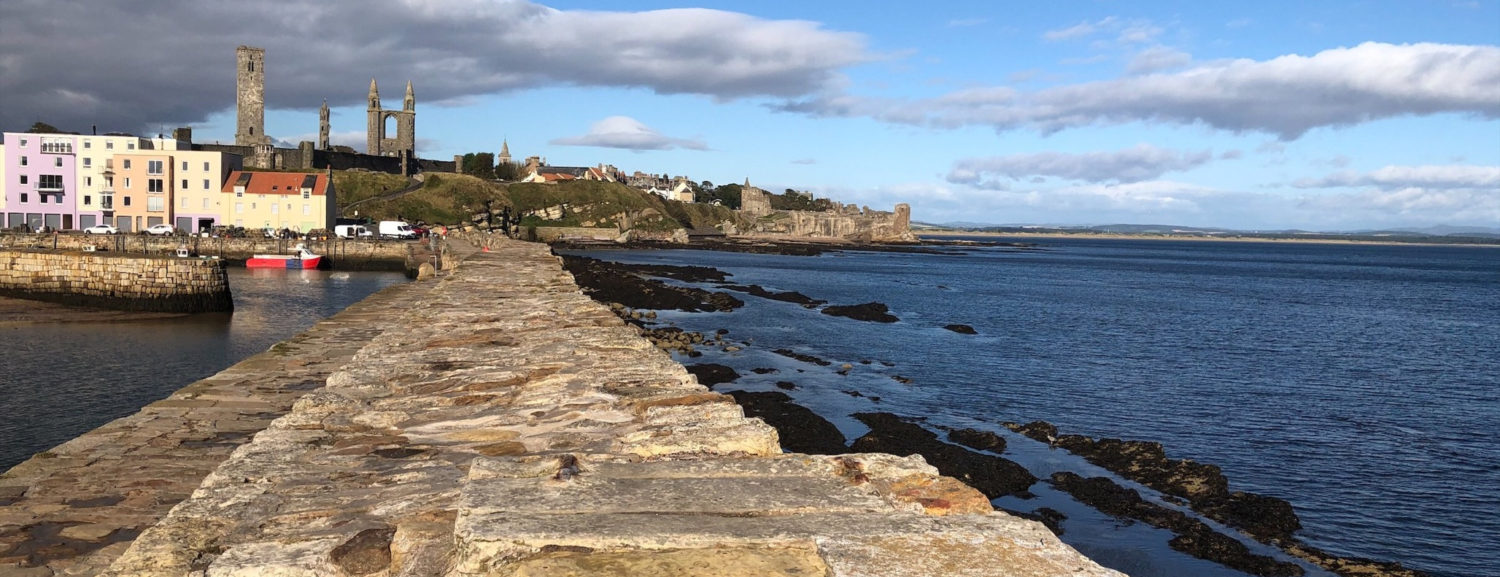Gregory’s pillar, marking the southern end of his meridian line, is marked on the Ordnance Survey map, and stands in the back garden of a farm cottage on Scoonie Hill, a couple of kilometres south of St Andrews. It less than 1 metre to the side of the terrestrial geodetic meridian through the telescope bracket in the window of Upper Parliament Hall 2.4 kilometres to the north.
The shaft of the pillar is 9 feet 3 inches long and 12 inches square at the base, and it is fixed into the centre of a slab of very coarse conglomerate, shaped like a millstone. The slab rests on a brick base 14 inches deep. A three-pronged iron bracket, 3 feet high, is fixed to the top of the shaft, and each prong is terminated
by a circular eye.
In Delineations of St. Andrews (first ed., 1807), it is stated that the meridian line was ‘determined toward the south by one of two large stone pillars of a conical form, erected on the height of Scoonie-hill, within view of the town, and on the north, by a small iron cross, to be seen on the west end of the house at present possessed by the principal of the United College’. [….] The present pillar was quite visible from the town before the shelter-belt of trees was planted at Scoonie-hill. (Wilson 1910, 213–221). Here we are told the two pillars were of conical form—not our present single long square shaft; that the trident arms ended in crescents—not our present circular rings; and that the north point was a small iron cross on a house on the other side of South Street from Gregory’s observing room atop of the Old Library—not the iron telescope bracket in one of its window openings; and also that the pillar was visible from the town.
The pillar is not visible from the Old Library where Gregory had his observatory. (This is the case even without the complication of new buildings in St Andrews and the growth of trees on Scoonie Hill in the intervening centuries.) It is speculated that the original wooden pillar was on the side of the hill in the middle of an agricultural field, and was moved to a safer location in the cottage garden when it was re-erected by David Gregory, James’ grand-nephew and fifth Regius professor, in 1757.
It is said that the stone pillar was either never put back where the wooden pillar was planted or was since moved. The University Minutes of 17 March 1775, eighteen years later, say that “[…] the two poles that were set up on the top of a hill south from the town for the meridians of the telescope and transit instrument are fail’d and frequently beat down by the wind and that […] two stone pillars should be set up in their place”.
